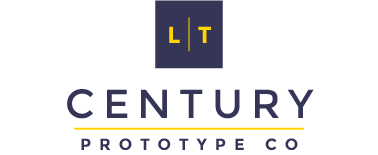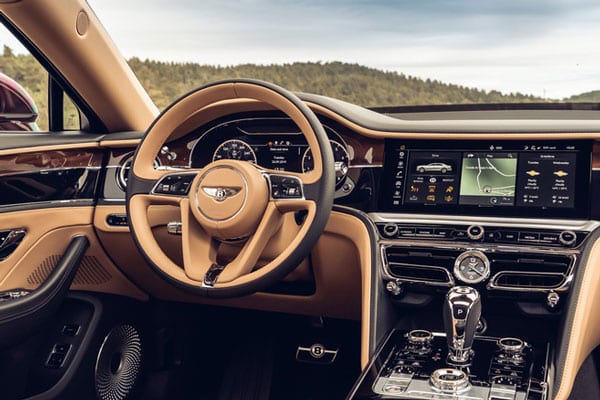Luxury automotive manufacturers face a critical challenge when producing small-batch interior components that demand exceptional quality without the massive investment required for traditional manufacturing methods. Vacuum casting emerges as the optimal solution for creating premium automotive interiors, delivering injection-molding quality at significantly lower costs and faster turnaround times for limited production runs.
This manufacturing technique uses vacuum pressure to eliminate air bubbles and achieve intricate details that meet the exacting standards of luxury vehicle interiors. You can produce everything from dashboard components to trim pieces with superior surface finishes and dimensional accuracy that traditional small-batch methods struggle to match.
Understanding the balance between cost efficiency and quality standards becomes essential when you’re evaluating vacuum casting for your luxury automotive interior projects. The following analysis will examine specific techniques tailored for automotive applications and provide a comprehensive cost-versus-quality comparison to help you make informed manufacturing decisions.
Vacuum Casting Techniques for Luxury Automotive Interiors
Vacuum casting delivers exceptional surface quality and dimensional accuracy for luxury interior components through specialized material selection and controlled processing parameters. This manufacturing approach enables cost-effective production of high-end automotive parts in quantities ranging from 10 to 100 units.
Overview of Vacuum Casting in Automotive Applications
Vacuum casting serves as a bridge manufacturing process for luxury automotive interiors where injection molding proves economically unfeasible. You can produce dashboard components, center console elements, door panels, and trim pieces with surface finishes matching production-quality standards.
The process works by drawing liquid polyurethane resins into silicone molds under vacuum pressure. This eliminates air bubbles and ensures complete cavity filling for complex geometries. You achieve dimensional tolerances within ±0.2mm for most interior components.
Key automotive applications include:
- Dashboard fascias and instrument clusters
- Center console housings and storage compartments
- Door handle bezels and window switch panels
- Gear shift surrounds and climate control interfaces
- Speaker grilles and ventilation outlets
The vacuum environment prevents porosity and surface defects that compromise luxury vehicle standards. You can replicate fine textures, logos, and surface details directly from master patterns without secondary finishing operations.
Materials and Processes for High-End Interior Components
Luxury interior prototyping demands materials that replicate production-grade properties while maintaining aesthetic excellence. You select polyurethane resins based on specific performance requirements and surface characteristics.
Premium casting materials include:
|
Material Type |
Properties |
Applications |
| Shore A 80-95 polyurethanes | Flexible, soft-touch feel | Armrests, door panels |
| Shore D 70-85 polyurethanes | Semi-rigid, paintable | Dashboard components, bezels |
| Flame-retardant resins | UL94 V-0 rated | Electrical housings, switches |
| UV-stable formulations | Color retention, durability | Exposed trim pieces |
High-end material casting requires precise temperature control during resin preparation and mold filling. You maintain resin temperatures between 40-60°C to ensure optimal flow characteristics and minimize cure shrinkage.
The silicone molds themselves use platinum-cure systems for dimensional stability and surface reproduction. You achieve Class A surface finishes directly from the mold without post-processing. Multiple durometer silicones create complex parting lines and undercut features standard in luxury interior designs.
Advantages of Vacuum Casting for Small-Batch Production
Small-batch car components benefit significantly from vacuum casting’s economic advantages over traditional manufacturing methods. You eliminate expensive steel tooling costs while maintaining production-quality results for quantities under 500 units.
Cost benefits include:
- Tooling costs 80-90% lower than injection molding
- Lead times reduced from 8-12 weeks to 2-3 weeks
- No minimum order quantities required
- Design iterations are possible without significant investment
Low-volume luxury production gains flexibility through rapid design modifications. You can adjust wall thickness, add features, or modify surface textures by simply creating new master patterns. This proves invaluable during development phases or for limited-edition vehicle variants.
Precision cast interiors achieve mechanical properties comparable to injection-molded parts. You obtain tensile strengths exceeding 35 MPa and elongation values above 200% with appropriate resin selection. Surface hardness ranges from Shore A 85 to Shore D 85, depending on application requirements.
The process scales efficiently for luxury manufacturers producing 25-200 interior components per model year. You maintain consistent quality across production runs while preserving the flexibility to accommodate engineering changes or market feedback.
Cost Versus Quality Analysis in Small-Batch Luxury Automotive Interior Fabrication
Small-batch luxury automotive interior production requires precise evaluation of manufacturing costs against quality requirements. Premium interior components demand specialized fabrication methods that maintain exceptional standards while controlling expenses through efficient production strategies.
Cost-Effective Approaches for Premium Interior Parts
Vacuum casting emerges as the most economical solution for producing 10 to 200 premium automotive interior components. You can achieve production-quality parts at a fraction of traditional tooling costs.
The process allows you to create approximately 20 castings per silicone mold. This makes it ideal for cost-effective premium parts where traditional injection molding becomes financially prohibitive.
Material selection significantly impacts your overall budget. Polyurethane resins offer excellent surface finish and durability while remaining cost-competitive for small-batch car components.
|
Production Method |
Setup Cost |
Unit Cost (50 parts) |
Lead Time |
| Vacuum Casting | Low | Moderate | 2-3 weeks |
| Injection Molding | Very High | Low | 8-12 weeks |
| CNC Machining | None | Very High | 1-2 weeks |
You reduce waste through precise material usage and eliminate expensive, challenging tooling requirements. This approach proves especially valuable for limited-edition luxury vehicle programs.
Precision and Quality Control in Automotive Trim Manufacturing
Automotive trim fabrication demands strict dimensional tolerances and surface quality standards. You must maintain consistent wall thickness and eliminate surface defects that compromise perceived quality.
Temperature control during casting directly affects part quality. You should monitor cure temperatures within ±2°C to prevent warping or dimensional variations in precision cast interiors.
Quality validation requires comprehensive inspection protocols. Visual inspection, dimensional verification, and material property testing ensure each component meets luxury automotive standards.
Surface finish quality depends on mold preparation and material selection. You can achieve Class A surface finishes suitable for visible interior components through proper mold conditioning.
Defect rates typically remain below 2% when following established process parameters. This level of quality control satisfies luxury automotive manufacturers’ stringent requirements.
Balancing Investment, Efficiency, and Performance
Low-volume luxury production requires strategic investment allocation across tooling, materials, and labor. You maximize return on investment by optimizing each cost component without sacrificing quality.
Initial tooling investment for vacuum casting ranges from $2,000 to $8,000, depending on part complexity. This represents significant savings compared to injection molding tools costing $50,000 or more.
Labor efficiency improves through streamlined workflows and specialized training. You reduce cycle times by optimizing mold design and curing schedules for your specific applications.
Performance metrics should balance cost per part with quality standards. You achieve optimal results by establishing clear quality thresholds before production begins.
Consider total program costs, including development time, tooling amortization, and quality assurance activities. Your investment strategy should account for potential design changes common in luxury vehicle development.
Reference
*Image from https://www.slashgear.com/

